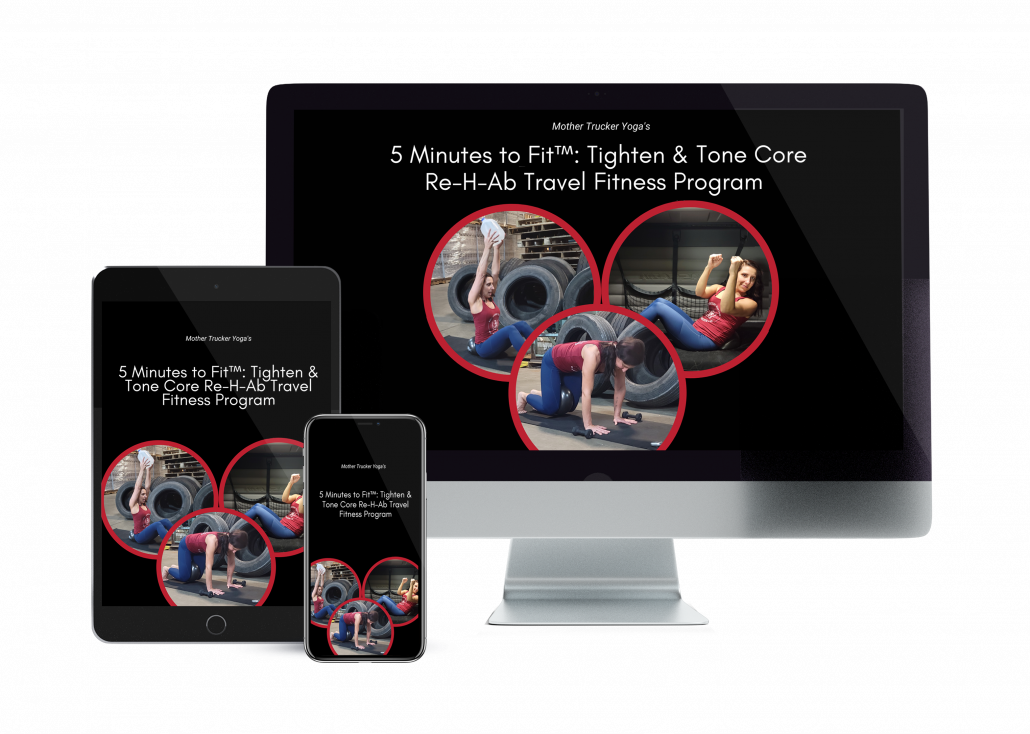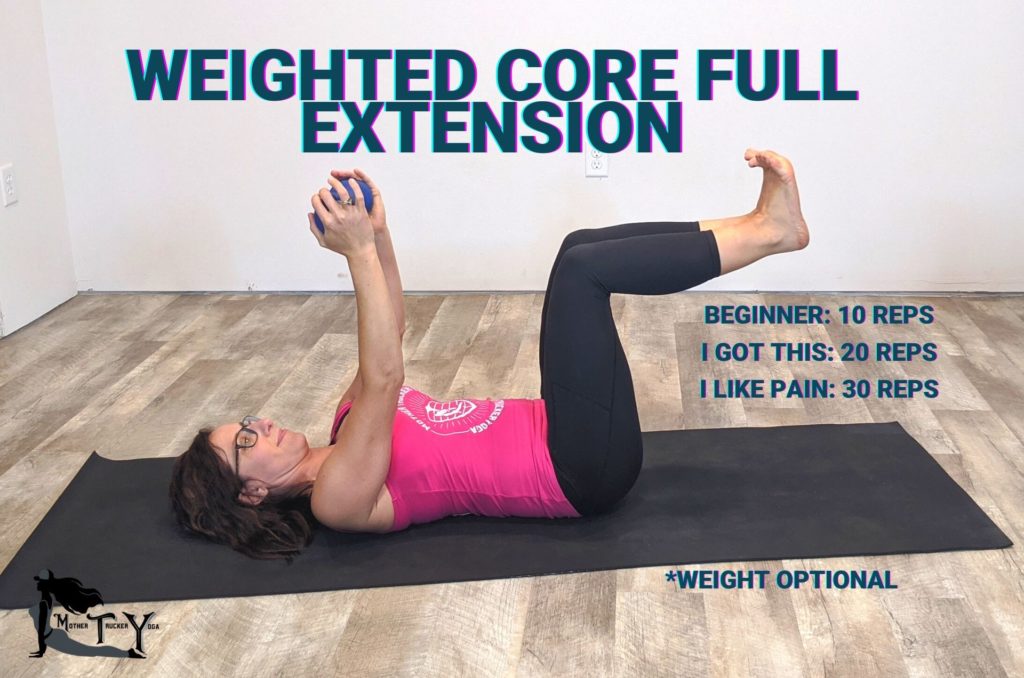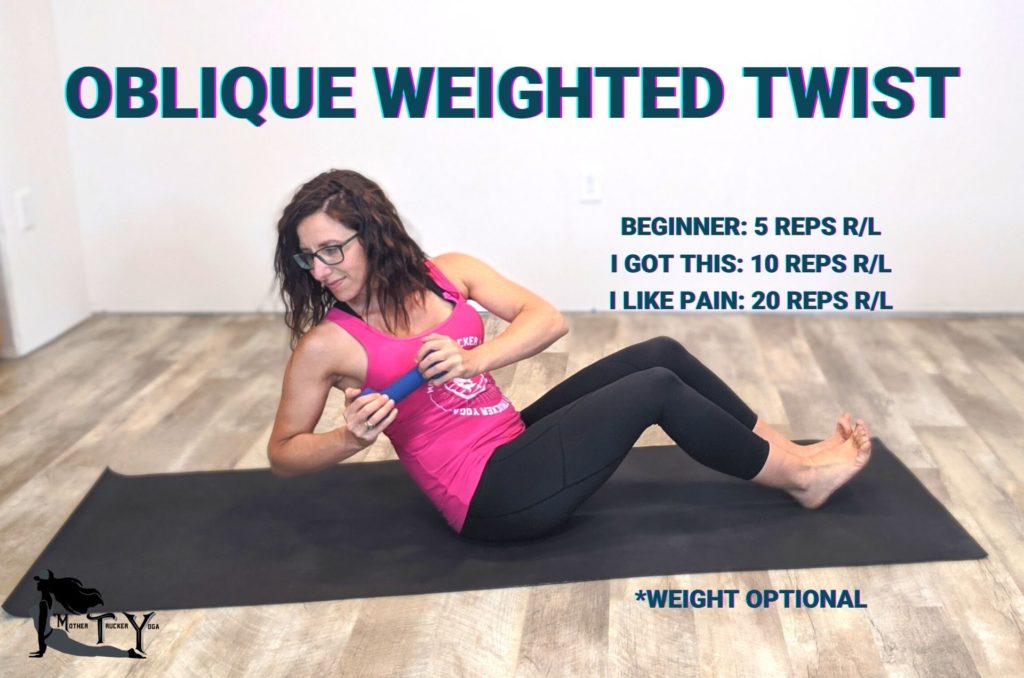4 Core Strengthening Strategies for a Stronger Body
Sitting all day can be hard on anyone’s body, but for a truck driver when the driver’s seat is your office, if you aren’t paying attention, your physical body can suffer. Trucking fitness should be an essential focus for any driver or company because without truck driver fitness, who do you have to drive those trucks? 4 Core Strengthening Strategies
After nearly 20 years of teaching yoga, functional fitness, and core health I have learned a thing or two when it comes to taking care of our physical bodies. And our core is essential in that. Many still think that sit-ups are a way to strengthen, slim down, and tone up the core. And it saddens me when I see other fitness leaders out there STILL RECOMMENDING THEM. If anything you learn from this blog, it’s to STOP doing sit-ups today.
And before you start to work out or add core strengthening exercises understanding where your core is and what it does is necessary for life fitness goals like reducing pain, improving mobility, and feeling good again.
Here are four of my core strengthening strategies for better trucking fitness.
Your core starts at the floor.
Cueing your core is simple once you know where it is and what it should feel like when it’s idling and in full swing. I used to ride on the coined cue “navel to spine” but as I have described in past videos and posts talking about the core, that cue is detrimental to the spine and creates a downward spiral of instability. Take a moment to think about and imagine that your body is a balloon. Take one hand and squeeze the balloon in the middle. Whether or not you have a balloon in your hand I bet you can imagine what happens. The two ends get pushed out and forced away from the center and the middle is small and pinched (weak). When you suck your navel to your spine you are a balloon squeezed in the middle walking about trying to be stable. Now throw some of your extreme exercise or poor posture into the mix and you have yourself some back issues (and probably digestive ones too).
So where exactly does our core start? I’ll give you a hint; look lower than your belly button. If you guessed your feet you are right! Our feet are the bottom of the core, and where it all begins. Having healthy feet is essential in order to cultivate a healthy core and a healthy framework for your body to stand, squat, reach and bend better.
And if our core begins at our feet, we have to treat our feet as an important tool for healthy, functional, and effective core work. One of the reasons I teach barefooted is because, How can you work your feet (core) if they are stuffed in shoes? It’s like trying to strengthen your arm in your cast, and even after it is all healed you still continue to wear the cast and expect those muscles to wake up and start working. For many of us our feet have spent most of our lives in casts: fluffy, padded, high heeled (and I’m not just talking women’s heels) shoes. I get it, good marketing and advertisements play a huge role in this myth that fancy shoes are the cure-all, but sadly this is far from the truth.
It’s time to take a closer look at our core structure and learn to move with greater efficiency and less pain. Apply my 4 house building cues below and start rebuilding your body from the foundation up and have better trucking fitness.
#1: THE FOUNDATION
If your feet have issues, there is a good chance that other parts of your body (including your core!) will have problems in the future or already do. Like a house, this is the rebar and footings in your foundation.
So considering our core starts at the feet, it only makes sense to start our work there. On your journey to your core, consider waking up your feet each day; try taking off your shoes for starters, and start to use your atrophied muscles. Think about possibly rolling out your feet with an acuball or tennis ball, stretching your calves, and moving your toes. Think of this stimulation as rebooting the circuit board in your physical body for effective amp usage. (Here’s a few BOSU Elite foot strengthening exercises to check out as well) Building a solid foundation is essential for better trucking fitness no matter what your age is.
#2: THE WALLS
The trail between your feet and pelvis determines whether or not your body has to take the highway or country road to get where it’s going and let’s hope there isn’t a fallen tree in the way. Like a house, this is the vertical rebar and poured walls that keep the house above the sound.
What starts at your feet travels up your inner leg line into your pelvic floor. Understanding neutral is vital to the health and harmony of your core. When standing, scan the following checkpoints as a basic rule of thumb for healthy foot and leg neutral.
- Outer edges of your feet parallel with outer edges of your mat (or in line with the sides of the room)
- Vertical fold lines on the backs of the knees point straight back (be ready for things to feel really weird)
- Pelvis in neutral, this means pubis and ASIS (anterior superior iliac spine), the bony front hip points stack and run parallel with the front wall
This may feel really awkward, especially if you have spent most of your life twisted and misaligned, your muscles have created memory and I’m pretty sure your shoes have either masked or helped this cause. Take a breath and see this realignment as core training and an exercise in itself.
#3: THE FLOORING
Your pelvic floor needs to be acknowledged and accessed for healthy core stability above. Your pelvic floor is the bottom floor of your house above, if it’s faulty or overlooked, it doesn’t matter what color you paint it, that house is no good.
Imagine if the floor of your house had a hole in it, after a while that hole in the floor would get annoying, and ultimately things would start to fall through, get stuck, or start to crumble. I encourage all my students to get to know this area first. It’s not that we just squeeze and hope for the best, but rather create an awareness of our actual pelvic floor and what it feels like. For many, truck driver or not, this area is dead, turned off as if the wires to the ground floor of your house have been cut or installed incorrectly. The good news is you can rewire them with work. I’ve seen it done on a vast number of individuals, ones who thought it was a lost cause, ones with extreme pelvic floor dysfunction and even pain.
Let’s start with the basics, draw awareness to the bony landmarks: pubis bone, sits bones, and tailbone, within these markings is your pelvic floor. Consider working to contract this area in various positions to see what works best and what needs work, and to see how effective are you from back to front contracting (anal sphincter, vaginal passageway, or soft tissue behind the scrotum, and urethra -controlling the bladder). Which area contracts, which area is miswired? What areas are you compensating for by squeezing the glutes instead? Think pelvic floor engages first, then glutes engage for better stability and function. As you become more effective here, that contraction upwards turns into stability inwards, meaning you should feel a contraction in your font lower belly, and that contraction is stimulated from within, not by drawing your navel to your spine.
#4: THE ROOFING
Your rib cage is like the roof for your house, if it’s crooked or off-centered you can expect your shingles, chimney, or dormers (meaning upper back, shoulders, and neck) to have issues eventually too.
In brief, when the rib cage is not stacked properly above your pelvis, your core is thrown off. For many, splaying of the front rib cage is a huge problem. Not only does it lead to the rectus abdominis (our 6 pack muscle as we know it) being overstretched and our back muscles being shortened, but this can also result in or lead to issues with a tightening of the psoas, which can cause problems when it comes to working the pelvic floor.
So the next time you go to work your core, start with the floor and work your way up. The reality is to properly work our core muscles there is some realigning we have to do, and several new roads that need paving in order to move and breathe pain-free and effectively. When our bodies are put in proper alignment we not only have reduced pain, we also recruit the right muscles to do their designated jobs and function more efficiently both on and off the mat, in all we do.
My husband may build and remodel houses for a living, but I get to help build up and rebuild people’s bodies that go to live in those houses. And these are just a few strategies to help you build better trucking fitness and a stronger core.
If you are ready to take the next steps to build a stronger, more stable, and sleek core with no sit-ups, join me in my 5 Minutes to Fit™ Program that will take you from where you are to where you want to be in just minutes a day!







